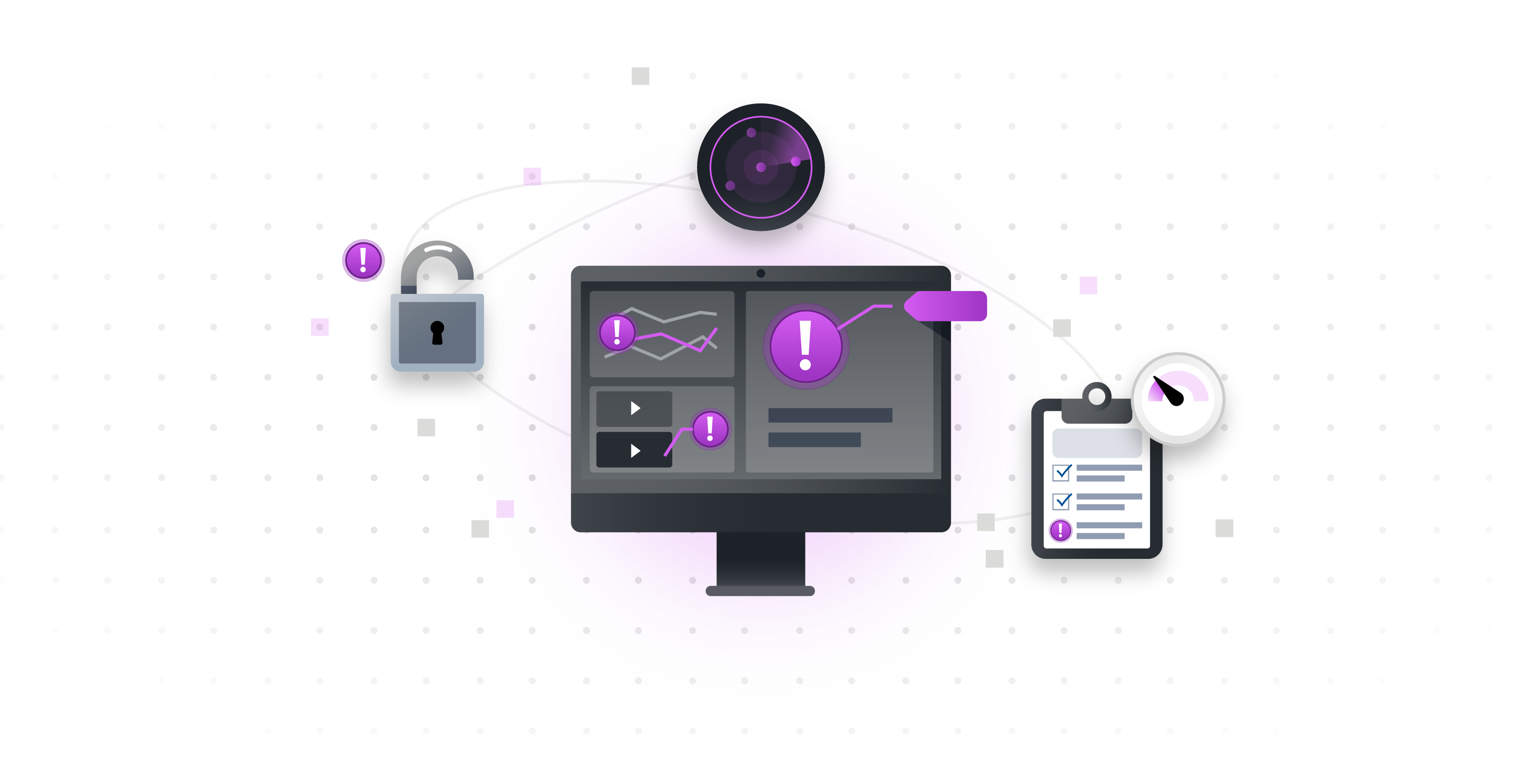Risk management and procurement in physical security
Learn how an effective risk management and procurement strategy can help your organization stay resilient and aligned with your partners.

Every organization faces risks regularly, often without realizing it. For instance, your company's access control system might fail, leaving your building vulnerable, or an unauthorized individual might try to access a restricted area. The real question becomes: How can you identify potential risks and mitigate them? Putting in place a risk management strategy is the first step.
GUIDE
What is risk management?
Risks come in many forms; some we can control, and some we can only respond to. Effective risk management starts with leadership. It means planning and making smart long-term decisions that involve ways of reducing, mitigating, or transferring risk as needed.
Why is risk management necessary in physical security?
In physical security, effective risk management means identifying potential threats so you can anticipate and prepare for them before they escalate into security breaches or incidents. The goal is to protect your organization's human and physical assets and maintain uninterrupted operations.

Risk can't be eliminated but can be continuously evaluated based on your organization's actions, vulnerabilities, and risk acceptance. Without proper risk management, your organization could be putting your employees' livelihoods and even the broader public at risk. By protecting employees, customers, and visitors, you’ll foster a safe environment that enhances your organization's reputation.
In physical security, one major risk is using unsecured cameras and IIoT devices, where data and communications could be intercepted. This is especially true when an organization has a well-documented set of cyber risks associated with them. These devices can grant unauthorized access to networks and equipment. Keep in mind—while having a good cybersecurity posture can't compensate for using devices from untrustworthy sources, it’s still better than not taking any protective measures at all.
A robust risk management plan can help minimize disruptions, ensuring business continuity during adverse events. And early risk mitigation helps prevent costly damages, legal issues, and business losses, safeguarding an organization's overall resilience and stability.
BLOG
How procurement experts can help your organization
Not everything is within our control. In a sizable organization, mishaps are inevitable. A key metric for risk management experts isn't just how many times things went wrong, but how well they reacted and solved issues during challenging situations.
Procurement experts can improve their risk management strategy by reviewing tenders and request for proposal (RFP) rules to include all necessary factors. This is especially important when buying IIoT or smart devices, where assessing a supplier’s trustworthiness and cybersecurity history is crucial.
Why it’s important to have an ongoing procurement process
Procurement is an ongoing process, not a one-time task. In physical security, a common procurement mistake is only focusing on price and quality without considering the credibility of suppliers. This overlooks important technical, ethical, reputational, and financial risks that organizations should consider.
Choose partners that can grow with you
It’s essential to choose partners who are continually innovating and expanding their product lines. Part of the procurement process is managing your product or services’ ongoing performance as time goes on. By maintaining a rich ecosystem of partners, you’ll ensure that when it's time to replace hardware or equipment, they have the necessary options to meet your evolving needs.

Having an ongoing procurement process guarantees that you'll always have access to the latest technology and solutions, supporting the long-term success and adaptability of your operations. And part of this process means continuously reassessing your vendors to ensure their services consistently meet your organization’s evolving standards.
BLOG
Foster a culture of risk awareness
Effective risk management lets your procurement department consider long-term interests rather than make short-sighted decisions. While that might seem like a significant investment, the focus should be on achieving the most value possible.
Technology can help keep track of risks within your business, but it’s equally important to foster a culture of risk awareness, accountability, and investment within your organization. A comprehensive approach to security should incorporate multiple lines of defense to secure your environment and protect your data.
"It’s less about technology and more about the culture, people, and processes put in place throughout the organization. For procurement professionals and those around the boardroom table, it all comes down to understanding the risks, accepting responsibility, and having the determination to invest accordingly."
7 actions toward building a diligent risk management strategy
To achieve a robust security posture, your organization can combine technology with comprehensive risk management, while considering inevitable human oversight.
This can be done by:
- Addressing gaps: actively reviewing near-misses and incidents is crucial for learning and improvement, allowing you to identify potential weaknesses in your risk management strategies and implement corrective measures before serious incidents occur
- Educating employees: sharing potential risks at all levels that are relevant to their roles and the organization as a whole, ensuring they understand how actions or decisions can impact safety, security, operations, and reputation.
- Establishing steps: having robust incident response protocols to ensure quick, effective, and coordinated responses when issues arise.
- Prioritizing cybersecurity: implementing cybersecurity best practices from the start and adopting a multi-layered approach to security throughout all stages of product development.
- Investing in risk management: allocating resources (financial, time, and expertise) toward effective strategies and tools that support risk identification and mitigation.
- Promoting accountability: individuals and teams can take responsibility for identifying, reporting, and mitigating risks, which will create a sense of ownership in risk management processes and outcomes.
- Testing processes: Conducting drills and simulations to enhance preparedness by testing response strategies in realistic scenarios, helping to refine procedures, and strengthening overall readiness to handle emergencies or unexpected events
